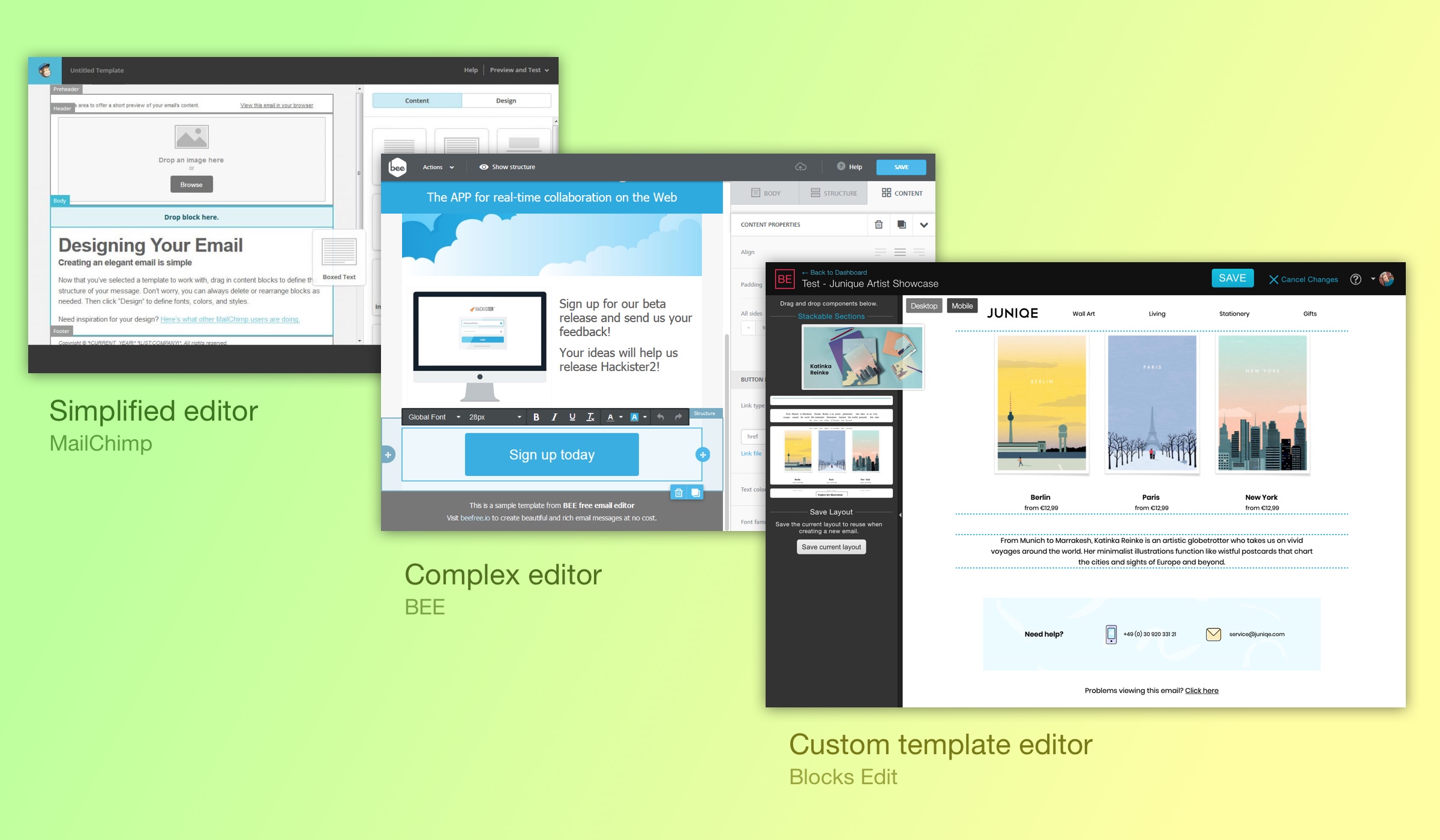There are many visual email editing tools. They can all be broken down into three categories:
Simplified email editor with template options
This editor usually comes with an email provider. It includes template options to base your design on. Any design customization requires working around their templates, which are usually pretty limited.
Complex email editor you build from scratch with
This editor generally has a bunch of options that most likely need a professional designer to figure out as it involves a lot of tooling (defining hex code values for colors, setting font properties, spacing and margins, etc).
Email editor that uses your own custom template
This editor has code that works around your HTML to enable editable content similar to the way a content management system for a website works. This allows for the most customization in your design.
While simplified and complex editors make up the majority of visual editors, the custom template editor is a newer breed that's starting to expand as a response to the constraints of traditional builders.
Which one is better?
That depends on what your goals are:
- Simplified editor - if you want a basic template, an ESP’s editor may be a fine option, though your email will end up looking similar to other organizations that also use those templates. It's the lowest cost, but also the most design-constrained.
- Complex editor - if you want more customization, this requires more work on your end, or working with a designer. It comes with a higher cost because of the extra effort you need to put in, but you get a more original design.
- Custom template editor - if you want a completely custom, branded template. There's an upfront cost for designing and coding the initial HTML template, but offers the most design flexibility.
It comes down to your available resources and the level of design customization you're going for. For simplified and complex editors, it's about which has the right customization features that you need. With a custom template editor, the customization options are based around the way your template is designed and coded.
We’ve created Blocks Edit as a visual editor to work with your custom coded template. It's easy to implement and make it a part of your current workflow and invite your team to use. Get your template setup on it for free.


